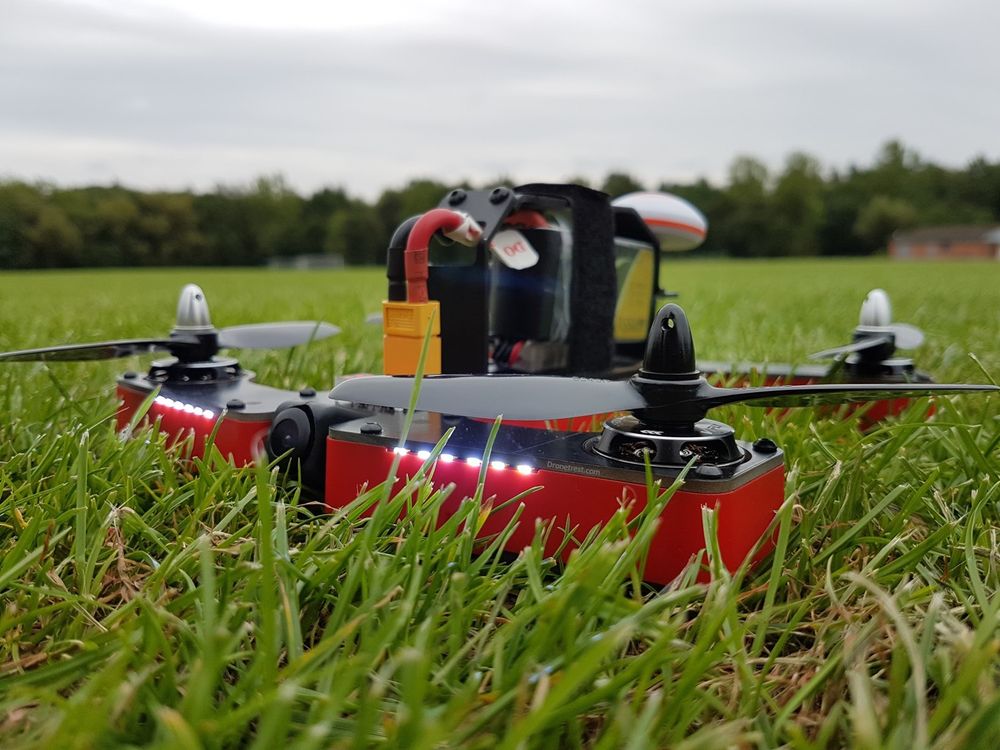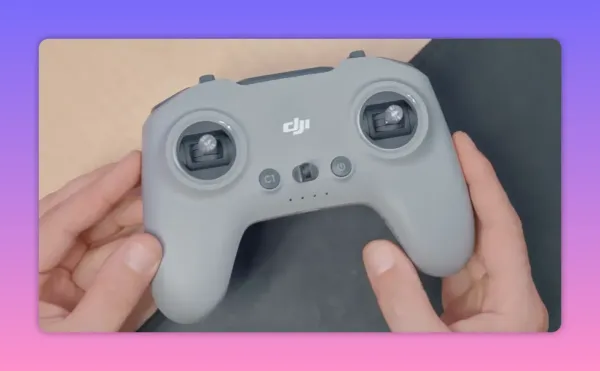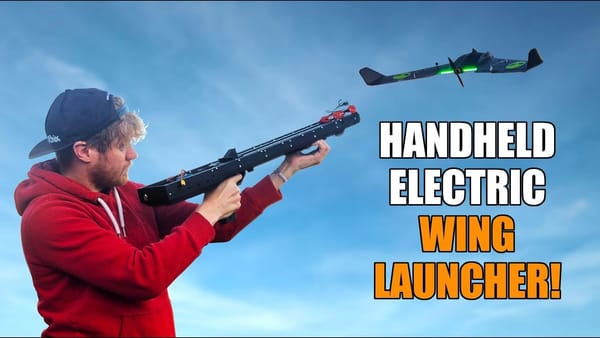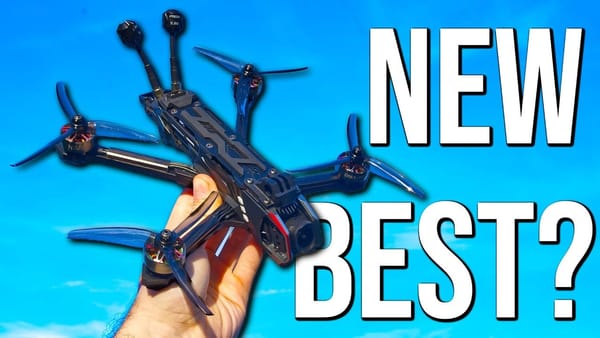The R220 M2 is a new release from ViFLY; a ready-to-fly or bind-and-fly FPV racing drone that is suitable for beginners and advanced pilots alike. It might be lacking in the ‘cool design’ department, but it more than compensates for this with its smart engineering and quality touches. The drone itself flies excellently on the stock settings and is extremely quick to setup and get in the air. For such a compact and notably durable frame, the M2 is obviously somewhat heavier than a lot of 250 series drones but it makes up for it with powerful motors and durability.

The Good
- Amazing durability with outstanding build quality.
- Easily accessible bind button, VTX channel button, USB port and UART port along the side of the frame.
- Superb 2205 2600kv motors, with optimal dual 5″ efficiency.
- Compatible with 3S and 4S Lipo.
- Dshot600 ESCs, although Dshot300 by default.
- Fantastic VTX and RX signal.
- The metal battery housing provides protection from crashes.
- Two digits digital display on the frame to easily view FPV channel and battery voltage.
- Well-protected 700TVL camera with good dynamic range.
- Battery protector doubles as a GoPro mount.
- Very loud to intimidate passers by.
- Avialable in multiple colours.

The Bad
- The drone is on the heavy side and not the prettiest.
- Battery housing can damage batteries if the battery is allowed to slip forwards in bad crashes (requires DIY fix to secure battery with some extra foam).
- Not easy to open up to repair/ upgrade parts, requires the removal of 30 screws.
- Very loud (if stealth is your thing).
- No spare props included with the kit and they are only 2 blades (not necessarily a bad thing depending on your propeller preferences).

Why should you buy the M2?
The M2 is suitable for just about any pilot with its balance of power and durability. With this very durable outer frame, you won’t find yourself needing to repair this drone often at all! The 4s compatibility gives it some punch and it’s refreshing to see 2600Kv motors on an RTF drone. Other components include Dshot 600 ESCs and an F4 vibration-dampened FC with full BetaFlight OSD support. You also know that you’ve got a well-made drone in your hands as the M2 has been vigorously tested by the manufacturer. This mostly involved crashing into trees at high speed which is a great test! However, should you manage to break something, most of the components are swappable and ViFly sells a full range of spare parts.
Where to Buy
- GearBest (China)
- Vifly (China) (RTF and BNF version)
Make it a full FPV Kit with VR007 Pro Goggles

How does it fly?
After remaking and upgrading the previous model, VIFLY has put a lot of work into the performance of the M2 and, for a cheaper quad, this drone delivers. Whilst on 4s the drone whizzed around our testing area, screeching at passerbys and attracting comments. The response rate from the drone was ideal and once we had had a chance to edit the PIDs to our preferences, the M2 was rather competitive. As for the default PIDs, the quad is set up to fly at an intermediate level, with some level of customization done by the manufacturer.

Impressive build quality
One of the highlights of this frame is the quality of the manufacturing. When we took the M2 apart, we saw that care has been taken to ensure that it is built with practicality and design in mind. Firstly, all the screws have been secured with thread locker which is something you should expect from a pre-built quadcopter. Perhaps above and beyond our expectations however, we noticed that the internal connectors are all secured in place using rubber glue, which means that during even bad crashes the drone shouldn’t suffer an electrical failure. This is something that is rarely seen on all but the most expensive pre-built FPV drones.

Humanized design
The team at VIFLY have thought about some of the more annoying physical issues faced by the drone industry today, these being centred around accessibility. The M2 uses a few clever design tricks to minimize these issues – the main one being the very useful bind button on the side of the frame. Further along, you have the USB port easily accessible to configure and update the flight controller. On top of this, you also get an accessible 4-pin UART port on the side to add extra functionality such as a GPS module should you wish. At the front on the side is a button to change the channels on the video transmitter which is essential to access easily. Furthermore, there is an XT60 connector on the top of the frame, so you can connect your battery with no fear of loose cables getting in the way of props. Just in front of the battery connector, there is a convenient 2-digit display used for showing the battery voltage and the VTX channel. All this ensures that you can configure all the important things you need without having to open up the drone, which is a bit of a hassle (as discussed in the next section).

Built like a tank
The design of the Vifly R220 M2 is a ‘function over form’ approach, so some might be underwhelmed by the presence of the R220 at first glance (until you hear it screeching by). You have to admit that it looks something like a brick (and it feels a bit like one too). After some consideration, we decided this is not a bad thing. Firstly, it is incredibly strong and well-protected, with the motors and camera being totally protected as they are embedded deep into the frame. On the top is a strong metal cage that houses the battery, and this also adds extra protection should you crash upside down (which has been known to happen). The FPV antenna is also secured to this metal cage protecting the delicate antenna. At the end of the day, something will need to go seriously wrong in order for you to wreck this frame. For example, the M2 might not survive flying at full speed into a concrete wall, although this hasn’t been tested…*
*Although it might just survive, I don’t want to ruin my quad to test how strong it is just yet, but after a few bad crashes I have not damaged anything other than a few props and a battery (due to it sliding forward in the battery cage).

700 TVL IR Sensitive Camera
One of the most important features when flying is your FPV system, and it’s essential to ensure your image is clear. The M2 comes with an adjustable camera with fantastic picture quality, which makes it usable in almost any weather. You’ll be blown away with the excellent performance it delivers and how well it’s protected, being submerged into the frame as it is. The angle is adjustable all the way to about 80 degrees if you are that good…

What do you get?
The M2 comes in two different versions, the bind-and-fly (BNF) (which allows you to choose between a Frsky, Flysky and DSMX receiver) or the ready-to-fly (RTF) option. For the BNF option, don’t be put off by the fact that you have to bind your receiver to a transmitter – the binding process itself only involves pressing the bind button on the side of the frame. You just need a suitable transmitter and away you go! The RTF M2 comes with the FlySky FSI6, already set up and preprogrammed on BetaFlight. This is the version referred to in this review.
On the inside
Whilst the drone is a pain to open up, the modular design of the inner workings are a pleasant reminder that ViFLY have FPV experience. With repairs and upgrades in mind, the team have made it possible to replace and upgrade motors and ESCs, and so you can maintain your drone easily. The flight controller is mounted on damping foam, with an isolated receiver and, unlike other integrated frames, the components are not built into the PCB, allowing you to replace each individual item.

Summary
Overall, I can say this is a brilliant drone for both novice and expert pilots alike. This drone entices the user with great performance and you’ll learn to love the blocky nature of the design. It is also well-priced which is always a big plus! You may feel the necessity to change the stock props and get a real feel for each setup. If you do do this however, a word of caution. As the M2 uses 2600kv motors (which is great), if you want to upgrade your props to a 5040 4-blade propeller for example (a popular choice among FPV pilots), you’ll actually exceed the 30A limitation of the ESCs if you’re using a battery with a higher discharge rate (4s, 65C+). This is mainly due to the weight of the M2. So, if you do change things up, make sure to do your calculations first!
On the stock setup however, the drone is well within safety measures and on the stock battery and props, this drone can reach over 60MPH! Pretty impressive for a 3s setup…







